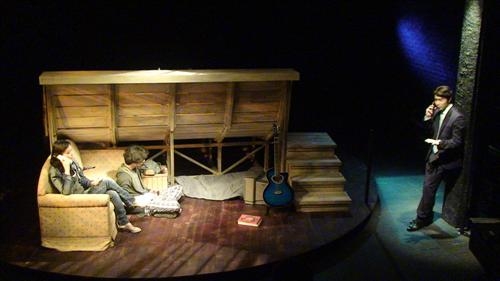Do you want the direction to air? Based on the concept of the direction, finding cue and making sound provide the great amount of details to decide the atmosphere in the theater. Sound can be the air which lead us to the way how to speak, how to move, how to weave the actors into the text.
Contents
Find sounds
Sound for Opening
Can you imagine the city and backgrounds of characters? Even before actors enter, sound speaks.
The Autumn Rain : a story of a poor family separated in a city
Sound for transition
When the scene changes, the stage also move like actors. Sound appears at the moment something moves. Thus, Drama is a series of movement, which can be also said even when the only stage changes. Sound evokes meanings as well as silence.
In “American Hwangap” written by Lloyd Suh, the stage was designed to move around so that various scenes appear. The characters live in suburban Texas so Country music can be also used in transition.

review(Korean):https://www.yna.co.kr/view/AKR20120405108500005
Sound for subtext
Sound helps audience and players to understand the background of the play. Sound can speak what actors do never speak.
See Quartet
Use sounds
Actors act.
Sounds also act.
At a moment, sound follows an actor; the due is an actor. At another moment, an actor follows sound; the cue is music. The theatre is the ensemble of all breathes on the stage. Sound helps the all breath plays together.
Let sound speak.
Let sound silent.
Sound acts on the stage.
Listen! The air is speaking.
In the case, the tempo of some sounds is the same as that of an actor’s breath, so that sound is synchronized with and activate an actor’s acting like harmony in music.In another case, sound appears in the different tempo from acting, so that the conflict amplifies the energy for acting like contrast in the picture.